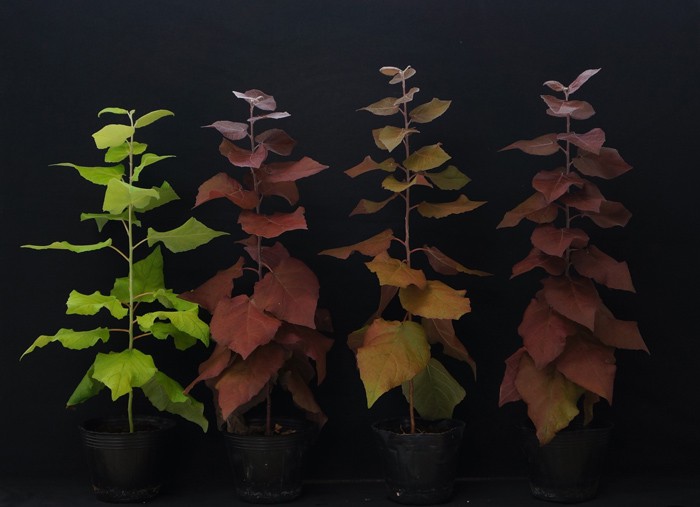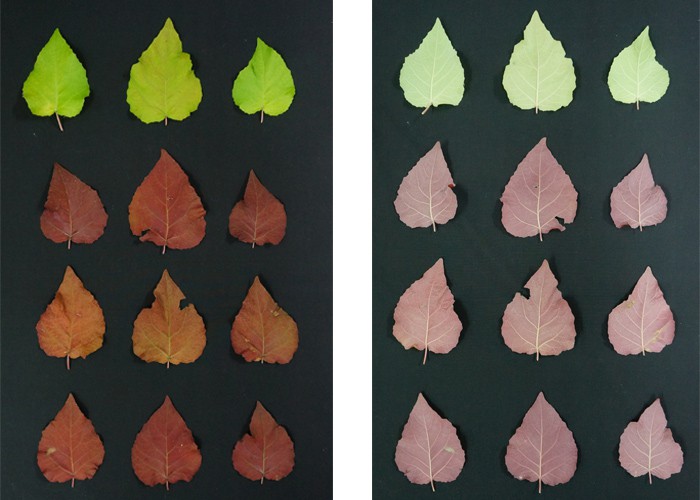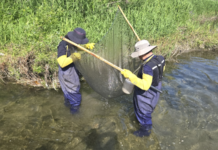
While regular poplars are in green (left), a new variety of poplar that produces the anti-aging agent anthocyanin grows in red year-round.
A new variety of poplar that is able to produce large quantities of the anti-aging agent anthocyanin has been developed in Korea.
The project was led by Dr. Young-Im Choi, of the Forest Biotechnology Division at the National Institute of Forest Science, and Professor Jae-Heung Ko, of the College of Life Sciences at Kyung Hee University. The joint-research team discovered a dominant gene that controls the biosynthesis of anthocyanin. They then inserted that gene into the cells of poplar trees to create a new variety of red poplar that produces anthocyanin in its leaves, stems and roots.
Anthocyanin is an antioxidant that prevents free oxygen radicals from destroying cells. This makes it an effective anti-aging agent for the skin, and for this reason it’s used as a component in a wide range of cosmetics.
Anthocyanins are water-soluble pigments that are found naturally in fruits and vegetables with a red or dark pigment, such as blueberries and red cabbage.

Red leaves from the new variety of poplar tree are used to produce large quantities of anthocyanin.
The new variety of poplar has an anthocyanin content 20 percent higher than that of blueberries. Since it’s possible to produce anthocyanins in large quantities by extracting it from the leaves of the new plant, production costs can be significantly lowered, the researchers claimed.
The technology used to develop the new tree variety is currently patent-pending. In the meantime, the researchers are working on developing a molecular separation technique that can mass-produce anthocyanin for industrial purposes.
Choi stated that, “Our team identified the cause of increased anthocyanin biosynthesis at the molecular level. When a molecular separation technique is finalized using these results, it will be possible to produce industrial quantities of anthocyanin from poplar plants at an affordable cost.”
She added that, “The technique is applicable to other leafy plants, in addition to poplars, and can be used to develop new plant varieties for landscaping.”
By Lee Hana
Korea.net Staff Writer
Photos: National Institute of Forest Science
hlee10@korea.kr























